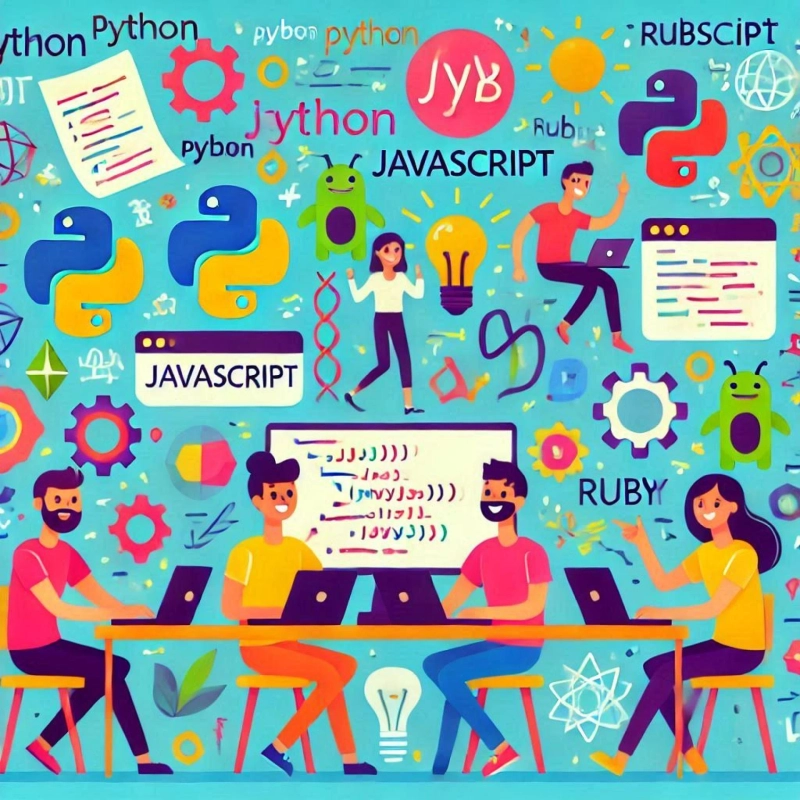Scripting languages are highly used in developing software, automations, web development, and data analysis. Unlike traditional programming languages, scripting languages are mostly interpreted rather than compiled, which makes them dynamic and easy for rapid development. Let's explore the top scripting languages reigning supreme in the tech world in 2025:
1. Python
Python remains in the number one position as one of the best future programming language and the most flexible scripting languages. It enjoys a simple syntax along with powerful libraries that make it perfectly suited for web development, data science, artificial intelligence, and automation.
Why It's Top-Tier:
- Rich library support (e.g., NumPy, Pandas, TensorFlow).
- Easy to learn, yet robust for complex applications.
- Generous community support and resources.
2. JavaScript
JavaScript is a core part of web development. It powers both client-side and server-side applications. It is absolutely necessary for interactive front-end development and increasingly used for back-end development with Node.js.
Why It's Top-Tier:
- It's everywhere in web browsers.
- Frameworks like React, Angular, and Vue.js make development much easier.
- Cross-platform capabilities.
3. Ruby
Ruby is popular for its beautiful syntax and for its flagship web framework, Ruby on Rails. It is mostly used for web development and rapid prototyping.
Why It's Top-Tier:
- Simplifies complex coding tasks.
- Strong emphasis on developer happiness.
- Vibrant ecosystem and supportive community.
4. PHP
Despite frequent criticism, PHP remains vital for server-side scripting, especially in web development. It powers a significant portion of the web, including platforms like WordPress.
Why It’s Top-Tier:
- Easy to learn for beginners.
- Seamless integration with HTML.
- Large ecosystem of tools and frameworks like Laravel and Symfony.
5. Perl
Once known as the "Swiss Army knife" of scripting, Perl remains the best for text processing, system administration, and web development tasks.
Why It's Top-Tier:
- High flexibility and powerful text manipulation capabilities.
- Ideal for quick scripting tasks.
- Strong presence in legacy systems.
6. Shell Scripting (Bash)
Bash is an essential tool for system administrators and developers working with Unix-based systems. It is used for automation, system monitoring, and task scheduling.
Why It's Top-Tier:
- Lightweight and highly efficient.
- Seamless integration with Linux/Unix systems.
- Essential for DevOps workflows.
7. R
R is a scripting language specifically designed for statistical analysis and data visualization. It's extensively used in academia, research, and industries dependent on data analytics.
Why It's Top-Tier:
- Advanced statistical and graphical capabilities.
- Rich ecosystem of packages (e.g., ggplot2, dplyr).
- Perfect for exploratory data analysis.
8. TypeScript
Although technically a superset of JavaScript, the adoption of TypeScript has exploded because of its type safety and scalability in large projects.
Why It's Top-Tier:
- Better error handling with static typing.
- Suitable for enterprise-level applications.
- Boosts productivity and maintainability of code.
9. Lua
Lua is a lightweight scripting language that is usually embedded in applications, particularly in gaming and embedded systems.
Why It's Top-Tier:
- Extremely fast and portable.
- Widely used in game engines such as Unity.
- Simple yet powerful.
10. Go (Golang)
Go is becoming popular in automation and DevOps, considering its simplicity and performance compared to the traditional scripting language.
Why It's at Top Tier
- Fast execution
- Good for cloud and microservices
- Strong concurrency support
Conclusion
The choice of scripting language depends on your project requirements and expertise. Whether it is Python for data science, JavaScript for web development, or Shell scripting for automation, each language offers unique strengths. The key to success is understanding the nuances of your chosen language and leveraging its capabilities to the fullest.
What's your go-to scripting language? Let us know how it has shaped your projects!



